Travellers rely increasingly on their devices for planning, booking and experiencing vacations. Because of this, digital marketing is clearly the way forward for travel and tourism companies who want to maximise their reach in 2024; in fact, the majority of new ideas for tourism promotion have an online or digital element to them.
However, marketing on the internet is a broad concept, made up of overlapping strands that come together to form a coherent digital strategy.
In this article, we’ll explore the different strands of internet marketing for tourism, explain how they work together, and give examples to show you how to win with a solid digital marketing strategy that increases your tourism customer base in 2024.
The importance of digital marketing in tourism
For the tourism industry, the internet works like a massive, open-source travel brochure, empowering consumers to transform virtual curiosity into real-world exploration. It opens up the wealth of the world’s destinations through travel content and booking platforms, and allows for real-time engagement through social media and connectivity.
Online channels accounted for roughly two-thirds of travel bookings in 2023, and a large part of that is due to the wealth of tourism companies employing digital marketing strategies.
Suppliers that execute effective digital marketing for tourism can:
- Increase the reach and awareness of their destinations and offerings
- Adapt quickly to new market trends and changes
- Lead the conversation around their brand or destination, shaping consumer perception
- Bring down marketing costs vs traditional advertising by allowing for more targeted promotion
Let’s dive into each of these benefits for tourism companies below.
Benefit #1: Increased reach and awareness of destinations
In a way, the internet is the ideal medium for travel promotion because it allows businesses to direct their promotional efforts towards very specific groups or demographics.
Since the ideal demographic for tourism marketing is often people spread across different countries and continents, without being restricted by location, digital marketing is the best way to maximise reach amongst those who are likely to be interested in a certain destination, hotel or activity.
Hence, by leveraging digital strategies like travel SEO, tourism businesses can transcend geographical boundaries and make their way in front of potential travellers worldwide. Best of all, these digital strategies give you unprecedented control (to varying degrees) over who you target, thus increasing the likelihood of attracting those with a genuine interest in your specific destination, accommodation, or activity.
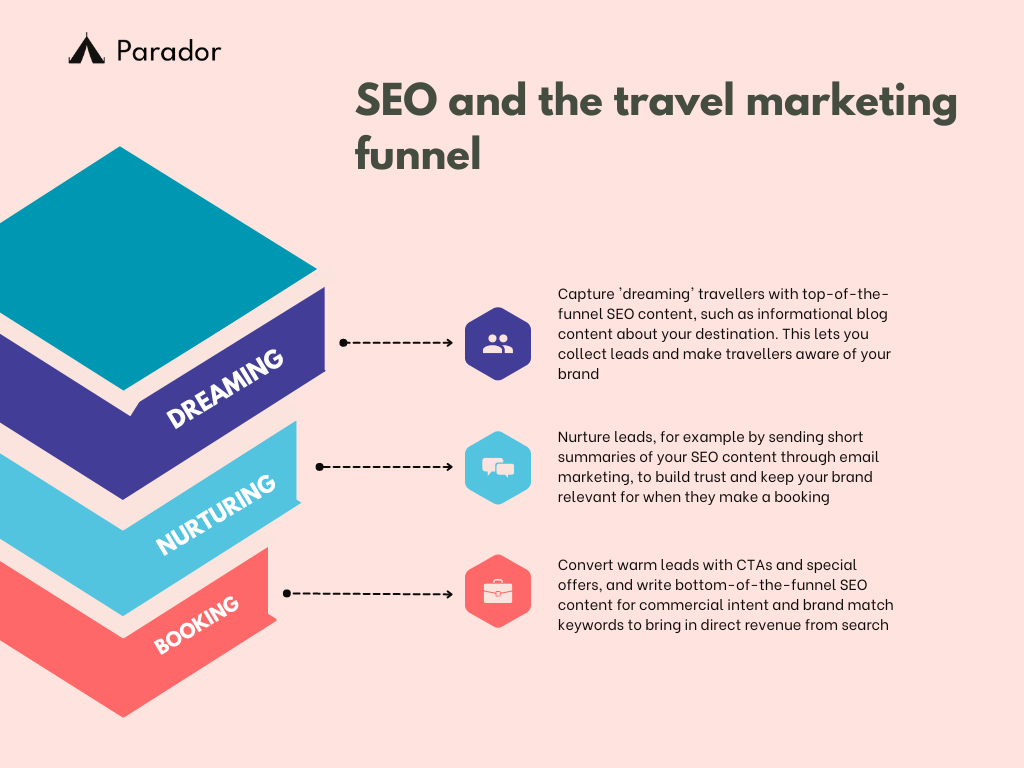
We’ll explain some of the ways to do this later in the article.
Benefit #2. Market adaptability
Tourism is a fast-paced industry, and it’s especially prone to rapid changes in consumer behaviour. The COVID-19 pandemic was a clear illustration of this: flights were cancelled, borders closed, and holidaying largely switched to ‘staycation’ and local excursions.
If you were to have paid for a billboard that advertised flight and vacation packages just before the pandemic, it would be the marketing equivalent of inviting people to a beach vacation when the beaches are closed.
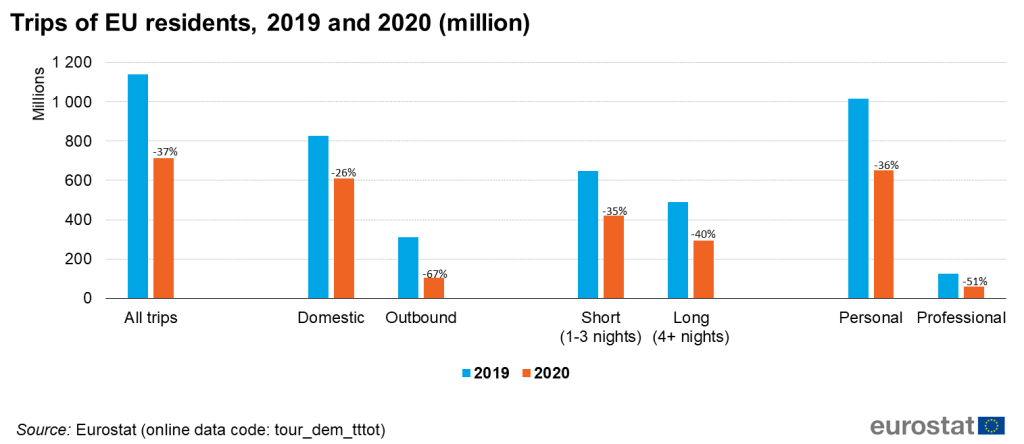
Internet marketing, on the other hand, gives the tools and flexibility to adapt campaigns based on real-time changes.
These changes don’t have to be a force majeure event like a pandemic, though: companies that leverage digital marketing can also make use of analytics tools like Google Analytics and social media analytics to gain insights into changing consumer preferences, interests, and trends.
For example, imagine a travel agency that has several different travel packages advertised on their website.
If that agency sets up an analytics tool such as Google Analytics on their site, they can measure traffic to specific pages and gain insights into the demographics of the people who visit them.
With this data, they’ll be able to know which of their tours are the most popular, and see the types of people who are interested in them.
These tools also show traffic sources (where traffic to their website comes from), which will help them to know which traffic channels (eg SEO, paid search, social media, email marketing) are performing best, and should be prioritised.
Savvy travel brands also use tools such as Google Travel Insights, which gives the latest data into travel trends and destinations, to identify sources of inbound demand in given time periods (eg people from which country go to which destination, at which time).
It’s easy to see how all of this information helps to understand which tour pages to optimise, and on which areas to focus marketing resources. This kind of market adaptability is just one significant advantage of digital marketing over traditional marketing for tourism.
Benefit #3: Lead the conversation
Where marketing used to be solely transactional – emphasising ‘buy now’ at the point of sale based on a simple value proposition – travel marketers now have to be occupied with conversational, or relationship-based, marketing.
With this in mind, the internet is probably the most powerful tool to shape the narrative around your travel offering and build relationships with customers.
For example, a solid travel content marketing strategy gives you authority and credibility by providing value to people interested in your destination. With a steady stream of content being published on your blog, you showcase your expertise and contribute to the overall narrative around your destination. This, in turn, strengthens the perception around your brand as an ‘authority’, which is a big plus for potential bookers.
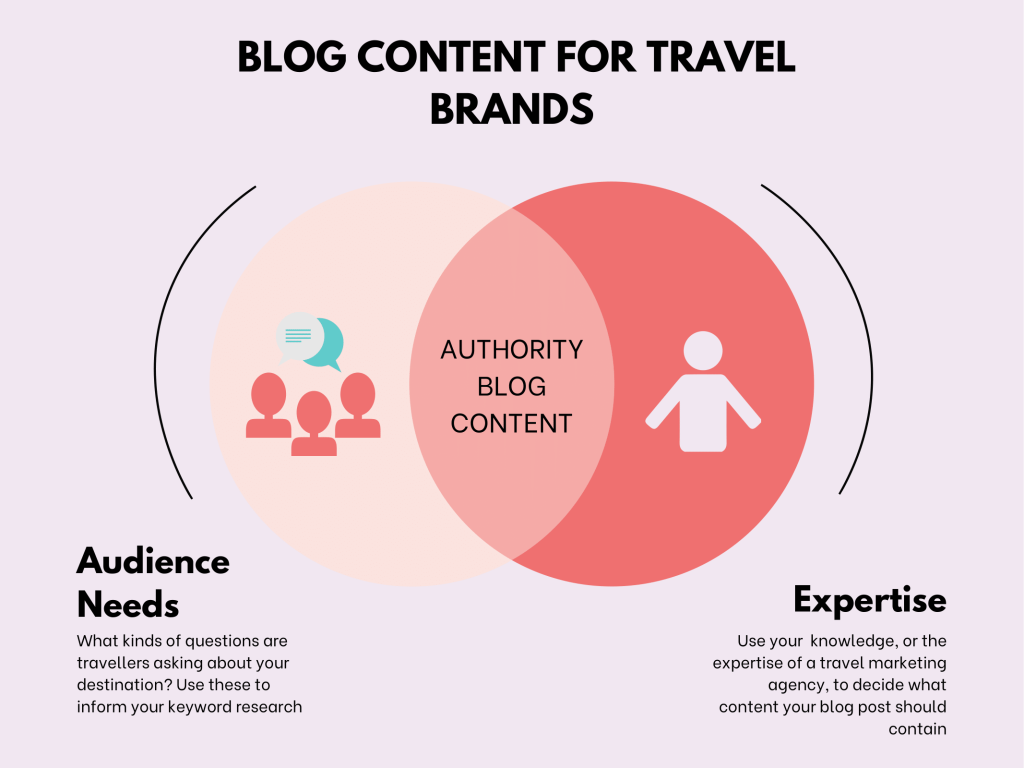
Some ideas for travel blog content are:
- Destination guides: write a guide which gives travellers inside tips on how to make the most of your destination, or a specific feature/attraction within your destination. This showcases your expertise, provides value to the reader and draws attention towards your offering
- Location roundups: write a roundup of the best restaurants, bars, museums, cafés, or activities in your locale, adjusted based on your target audience and an effective travel keyword research process
- Travel stories: real stories of guests who have travelled to your destination will resonate with your audience, because they provide a level of authenticity – and helps to drive them towards a booking
If you need help with your travel content, consider working with a dedicated travel content agency like Parador. Our Travel Content Pro service provides an end-to-end travel content solution, helping you to build an authentic connection with your guests and achieving consistent bookings over time.
Get direct bookings through SEO content
Outrank the OTAs and fill your calendar with direct bookings using Travel Content Pro, our end-to-end SEO content marketing service.
Pricing Plans
While SEO blog content on your website is the ideal content medium (because it allows you to bring in direct traffic), travel marketers also use channels like YouTube, TikTok and Instagram to disseminate powerful travel content that fosters a connection with their audience.
Social media in particular helps you establish a brand personality which consumers can identify with. You can use it to share updates, give sneak peeks of behind-the-scenes content, and repost user-generated content to create a more human and relatable image.
Additionally, the importance that consumers place on reviews means that they can be leveraged for success.
The internet has democratised marketing in a sense, and people place emphasis on consumer-generated content such as reviews and recommendations when deciding their travel plans. By encouraging or giving incentives to satisfied customers to leave reviews, you can use the conversational nature of modern marketing to your advantage.
From emails to socials and website content, wise travel marketers will employ an omnichannel approach to establish a consistent tone of voice and brand identity across their messaging. This is extremely important in an age where marketing is about creating conversation and relationships, which can be leveraged to build trust, identity and ultimately drive bookings.
Benefit #4. Cost-effectiveness vs traditional marketing
The final main benefit of digital marketing for tourism is the cost advantages it has over more traditional forms of marketing.
Consider the fact that online advertisements are highly targeted, often aimed at specific demographics, from specific places.
Traditional marketing, on the other hand, such as billboards, TV and radio, has a broader reach, but this dilutes its potential for reaching your particular target audience, which makes it more costly.
Internet marketing allows you to optimise your budget to target only those who are likely to be interested in your destination. For example, TV advertisements have fixed costs that are paid to the network, but advertising on search engines are charged per successful click. And if your online campaign is optimised to reach the right audience, this can bring a great return on investment vs traditional advertising methods.
In summary, digital marketing allows you to be more fine-tuned in achieving your goals, and to allocate your resources more tactically.
How to implement effective digital marketing
In this section, we’ll set out a range of different internet marketing channels and explain how best to implement them as part of a larger strategy, including the pros and cons of each.
First, though, here’s an visual representation which maps each of the following techniques onto three stages of travel (before, during and after), to show which strategies deliver benefits at each stage.
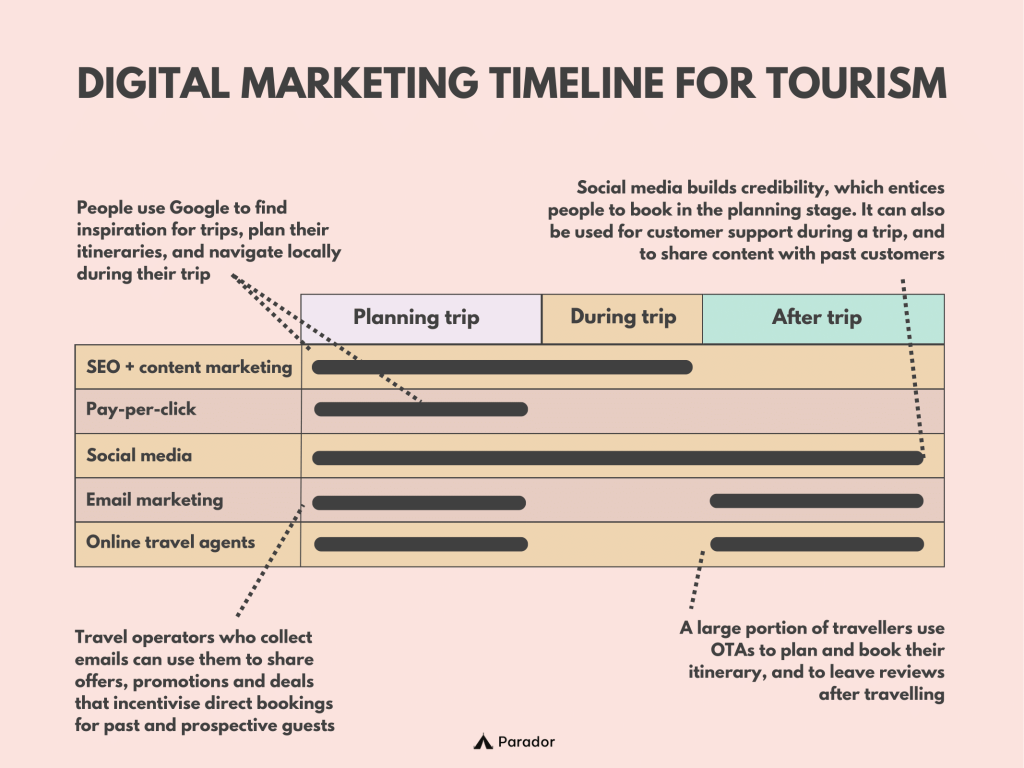
Utilising search engine optimization (SEO) for destination pages
SEO, or search engine optimisation, as the practice of optimising pages on your travel website to rank for keywords that travellers look for on search engines like Google. Executing a travel SEO strategy is a form of inbound marketing, and can deliver huge returns in the long run.
It’s the preferred strategy for tourism companies that want to focus on long-term gains and sustainable growth, since SEO continues to deliver results organically over time. However, this also means that it can take a significant initial investment – and lots of patience – while the optimisation efforts kick in.
The most obvious pages to optimise are your destination pages, because if you can rank on Google or Bing for keywords about your destinations, you have a high chance of bringing in more bookings.
However, many of these keywords can be extremely difficult to rank for, since there are online travel agents, travel aggregators and large corporate entities competing for the same keywords.
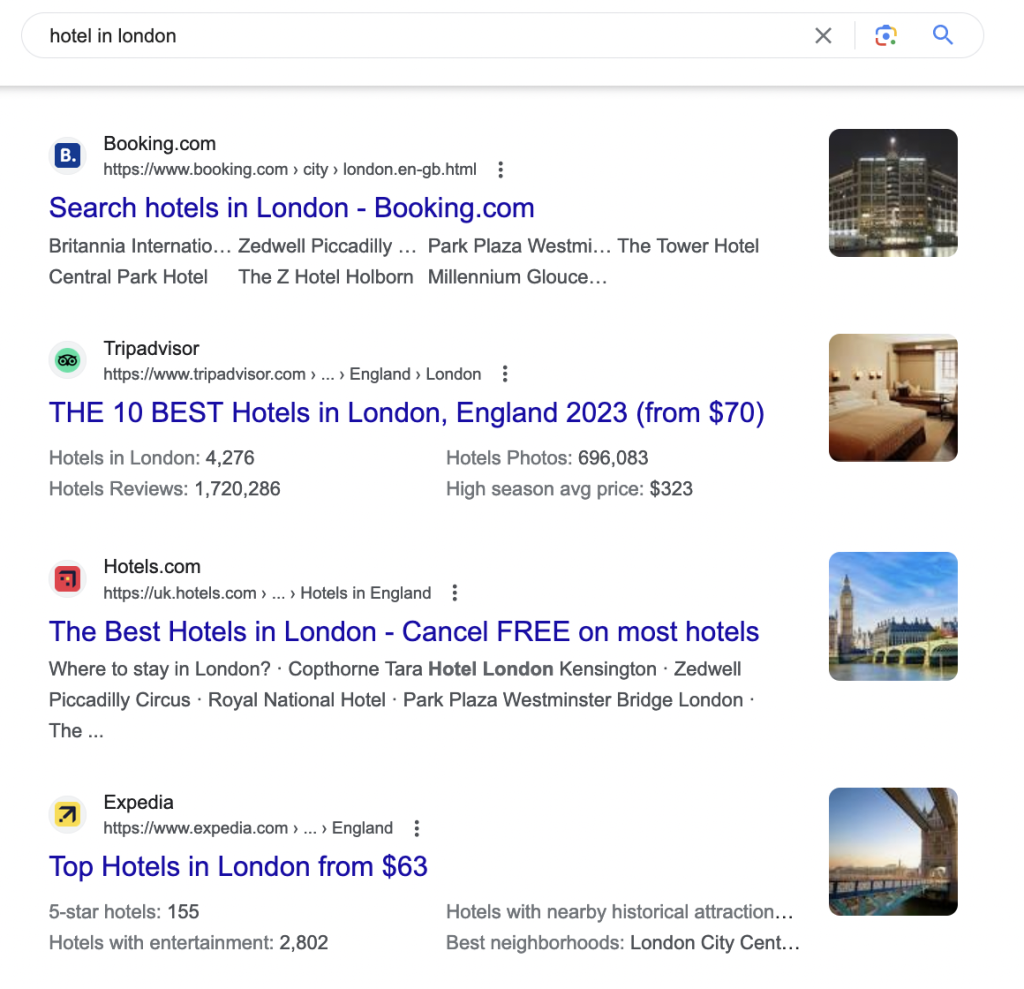
The ‘back-door’ method we use at Parador, however, involves building out a proper SEO content strategy with written blog content.
This is particularly effective for smaller or boutique travel companies that don’t yet have a huge online presence or resources for backlink building, because it exposes your website to those looking for more specific information about your destination.
In a nutshell, the idea is to write consistent blog posts around specific, low-competition keywords related to your destination, rank quickly, bring traffic and repurpose that content for other channels, such as social media and email lists. We call this Travel Content Pro.
To find out how to build out a high-performing travel SEO content strategy for your site, read our guides to travel SEO, SEO for tour operators and SEO for hotels.
You might have noticed that many of the top spots for travel-related keywords also go to listicles, or ‘roundups’. While you can create these types of listicles on your own blog, many tour companies use outreach to get their hotel, tour or attraction featured on relevant listicles. This is an effective (if time-consuming) form of exposure, and it also grows backlinks, a term for building SEO authority towards your site.
Finally, there’s local SEO, which is a way of optimising your business to appear in the map pack.
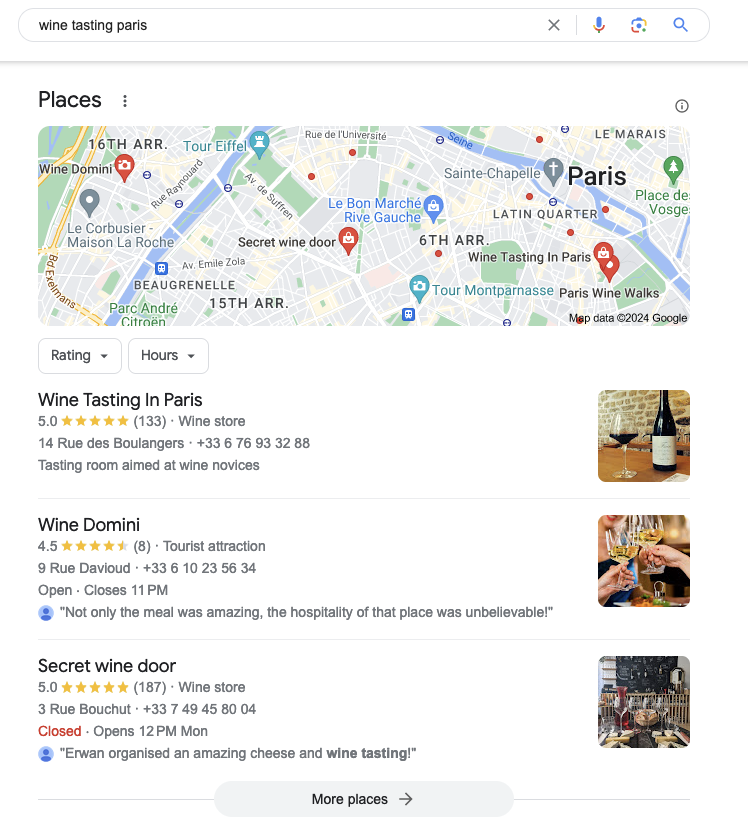
The key for local SEO is to have an optimised Google Business Profile with high-quality photos, videos and reviews. You can read our guide to local SEO for hotels for a detailed explanation of how to do local SEO for physical businesses.
Pros: SEO delivers bookings at scale over the long-term, and it can drastically increase the online presence of your brand.
Cons: Good SEO requires significant resources, time and energy, so it isn’t ideal for companies who want to prioritise short-term gains.
Bidding for the top spots with CPC marketing
For tourism businesses that want short-term gains, CPC (cost-per-click) advertising on search engines like Google is a quick way of reaching your desired audience, but it comes at a cost.
It works by bidding on keywords that your customers search when they’re ready to book a trip (these are known as ‘bottom of the funnel’ keywords), and creating ads to show on the search results page when someone searches that keyword. These ads are known as sponsored results.
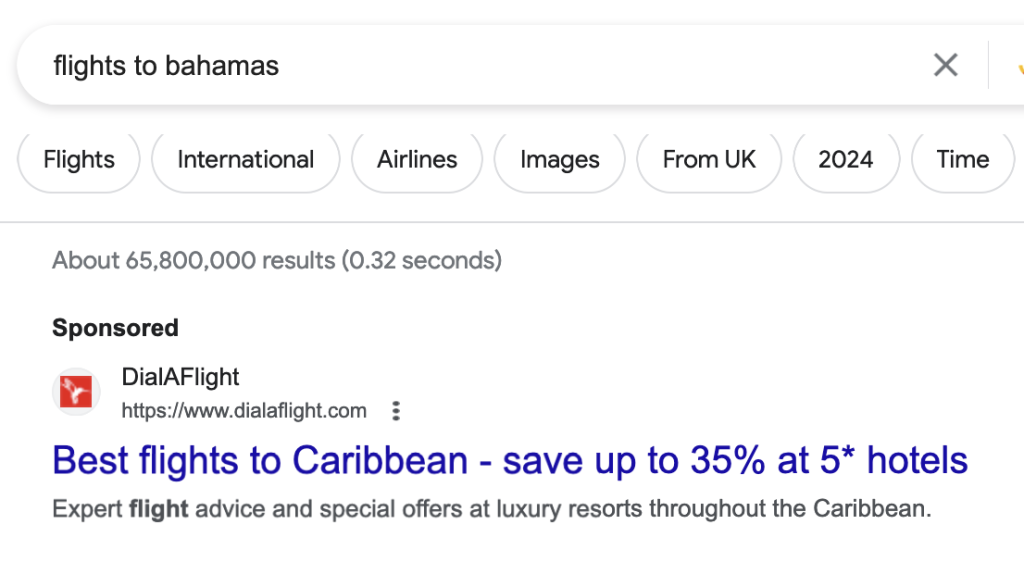
CPC differs from SEO in two crucial ways:
1. CPC ads are shown above organic search results, providing more visibility
2. The ads only show as long as you keep paying, which makes it a less viable long-term investment vs SEO
If you can reach a solid ROI (return on investment) on successful bookings from pay-per-click ads, it can be worth it, especially for seasonal surges and high-demand periods such as the summer holidays. However, these periods often raise the cost-per-click of keywords, meaning the expenses can add up fairly quickly (the average cost for travel keywords in 2023 was 1.34 USD per click).
Many businesses will compete for both organic and paid spots as part of their larger digital marketing strategy. The key here is to allocate resources through testing and iteration to find the most profitable balance between the two channels.
Pros: CPC allows companies to bid directly for bookings from those who are ‘ready to book’.
Cons: Online ads can be very expensive to maintain over time vs more organic marketing channels like SEO, which continue to bring website traffic after the initial investment.
Leveraging social media for visibility and customer interaction
Being active on social media is now an industry standard for tourism
However, as explained in this study in the Journal of Travel & Tourism Marketing, it’s not enough to be on social media ‘because you have to’.
Good travel social media managers understand how, and why, a consistent social media strategy creates a positive public-facing image. Social media helps to shape the narrative around your brand, and it does this in several ways.
Firstly, social media is the ideal platform to share engaging content about your brand or destination, which can lead to discussion and more visibility for your page. This positions you as a sort of ‘concierge’ and increases credibility, which is crucial in today’s travel marketplace.
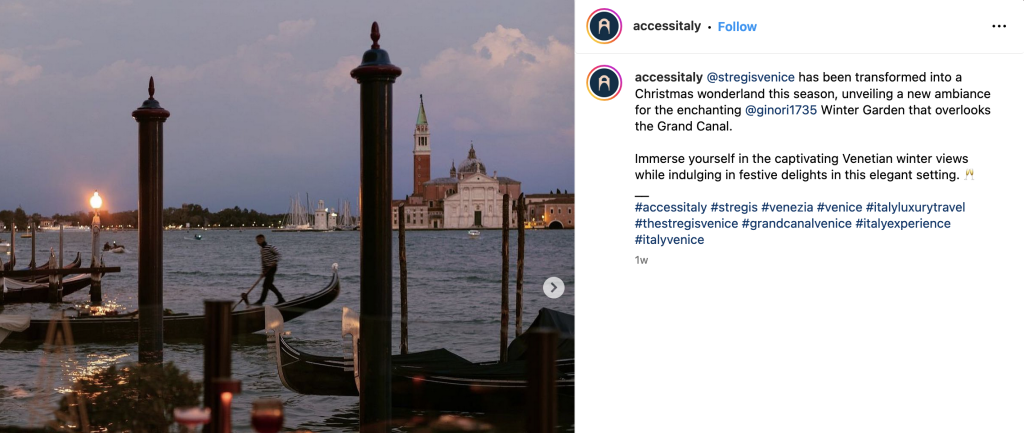
Sharing content also brings opportunities to cross-pollinate with your larger strategy. If you are working through an SEO content calendar, for example, you will have a steady stream of blog posts from your website to share on your social media pages.
Secondly, keeping social media up to date is a strong signal of a tourism business that is active and engaged, which fosters trustworthiness. Despite the fact that many people might not see your content when it’s posted (this is partly due to the competitive nature of social media algorithms), if a potential booker checks your Instagram or Facebook page and notices that it hasn’t been updated in months, or even years, there’s a good chance that they may book with a competitor instead.
Thirdly, many travellers go to social media channels by default when they’re looking for customer support. If you can respond to enquiries, provide information, and address concerns in real-time, you nurture a sense of connection that plays into your overall brand messaging.
Finally, it’s well known that inspiration for a trip often starts with social media, and the rise of social media influencers in travel marketing can’t be understated.
Some travel brands partner up with influencers to extend their social reach into the feeds of people that share the same passions and inspirations as their own clientele. The relative benefits of influencer marketing have to be weighed up against the costs, however, and brands shouldn’t rely solely on influencers for their marketing.
Despite the importance of social channels, it’s equally important to not spread your brand too thinly on social media. The best advice is to stick to just the few platforms where your target audience are most active, which will help you to concentrate your efforts where it matters.
Pros: Consistent social media efforts help to build up a positive brand image.
Cons: It can be time-consuming to keep on top of many platforms at once; ever-changing social media algorithms can reduce the reach of your efforts.
Using email marketing for customer engagement
In an age where 70% of people prefer to book on third-party platforms, direct communication between travel suppliers and their guests is more and more limited.
Hence, email remains an extremely powerful marketing strategy for travel companies because it allows for direct, personalised communication. This is why email marketing tends to have a very high ROI across all markets.
For that reason, building out a mailing list should be a top priority as a means of driving direct bookings, but also as a key cog in your overall digital marketing strategy.

Building out an email list can take time, especially because many people might be concerned about email saturation, or be reluctant to give out personal information. However, some email capture methods you can use include:
- Having an email sign-up form displayed prominently on your website and offering incentives for subscribing (eg promos, discounts, seasonal sales)
- Asking customers at check-in or checkout to leave an email, and communicating the benefits of signing up
- Promoting your mailing list on social media and other channels
Once you’ve obtained a set of emails and ported them to an email marketing tool, you can start sending newsletters with exclusive deals, seasonal offers or loyalty programs to your mailing list to encourage direct bookings.
Furthermore, email lists are a great place to promote your blog or website content, which can kindle inspiration for a future trip.
A more advanced travel email marketing strategy would be to gather even more data about each subscriber at signup (eg age, location, preferences). With this information, you can segment your mailing list based on demographics and customer behaviour, allowing you to deliver even more tailored marketing material to the right people. This kind of refined approach to email marketing is especially effective in tourism, where customers may come from varied backgrounds and demographics.
Pros: Email is a direct and highly personalisable marketing channel; it’s generally low-cost, and has a good ROI.
Cons: Building out an email list can be challenging due to privacy and spam concerns; segmentation for tourism companies to deliver properly personalised emails can be complicated due to the broad demographics of travellers.
Enhancing visibility with online travel agents
For many travel suppliers, online travel agents (OTAs) are a blessing and a curse.
Despite the fact that OTAs take up to a 30% commission, the reality is that people under 35 are more likely to use an OTA than book direct, and they provide a huge amount of visibility amongst travellers who might not otherwise find your business.
Optimisation is a concept normally applied to your own website, but it applies to OTA listings, too. It’s clear that some travellers will search only within an OTA platform, so your business should be present and optimised on the most important ones (Tripadvisor, Booking.com, etc) to capture that audience.
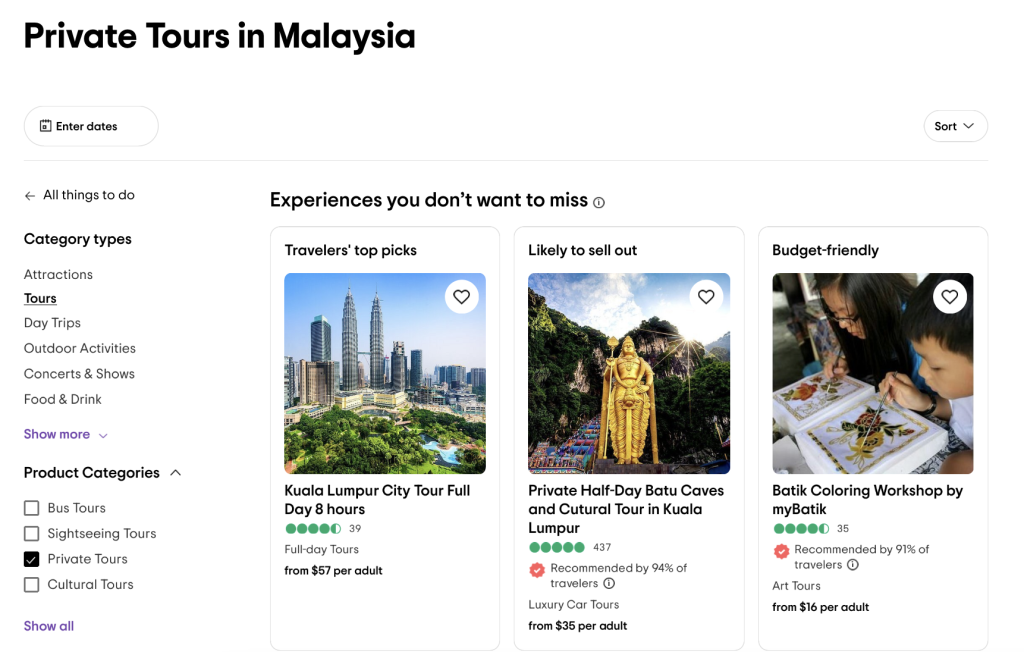
You can do this by:
- Including the keywords that people normally use to find your own website on your OTA listings through itinerary descriptions, key information, and FAQs
- Using high-quality images that are different from the ones on your website to provide a unique experience for the OTA
- Ensuring that your inventory, availability, and pricing information on OTAs is up-to-date and accurate to avoid confusing customers
- Offering exclusive deals or discounts for OTA customers to attract more visibility
Many OTAs also provide internal marketing tools which can be utilised for further reach, such as sponsored listings, promotions, and analytics tools. For example, you can launch sponsored ad campaigns directly within Tripadvisor, or use the analytics report on Booking.com to identify trends, track conversion rates, and adjust your strategy accordingly.
Importantly, many people use OTAs to write and read reviews, which are a very strong social signal that customers use to evaluate whether to make a booking or not. Managing and responding to all feedback on OTAs is important, not least because negative reviews are a reality, and they can damage the reputation of your brand.
While OTAs are clearly important, the most successful travel operators will work with a multi-channel strategy that encourages both third-party and direct bookings (eg through SEO) to maximise exposure.
Pros: OTAs provide lots of visibility due to their popularity, and can account for a huge share of reservations
Cons: OTA commissions often reach up to 30%; remaining visible amidst the competition can be difficult; OTAs act as an intermediary between you and your customer, which reduces the opportunity for direct, personalised communication
Conclusion: internet marketing is an opportunity for tourism
The realm of digital marketing clearly presents a huge opportunity for the tourism industry to thrive in an ever-evolving travel landscape.
We’ve covered how it helps reach more people, adapt to market changes, and tell a compelling brand story, all while being easy on the budget compared to traditional travel marketing approaches.
We’ve also given you practical information on techniques like SEO, CPC, social media, email marketing, and optimizing for OTAs. These aren’t just buzzwords—they’re the nuts and bolts of making your online presence work for you.
If you’re looking to simplify your digital marketing approach and boost your online presence, working with a dedicated travel marketing agency can make all the difference in attracting and keeping your guests. Whether you’re a small bed-and-breakfast or a large resort, fill out our form today and see how we can help you to embrace the potential of internet marketing for tourism.

